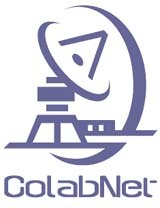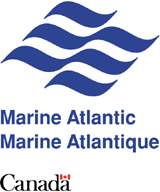PAGE CONTENTS
Objectives
The MeCA projects seeks to build upon the technology and applications model successfully developed and validated within the MIST Project. MeCA will develop a cost-effective and flexible technology and service model that will allow marine service operators to deploy and operate a range of network-enabled services on their vessels, and will actively commercialize the service. MeCA will develop and validate a range of services in the Canadian East Coast environment, including:
- High-speed Internet access
- Tourism services
- Banking (ATM, debit and credit card services)
- Remote data collection and management
- Distance Education
Challenges
The key issues to be addressed within the project include:
- Creating a technology and application model that can be effectively deployed over a range of vessel types and sizes.
- Validating the ability of the vessel operator to generate a positive economic return from the deployment of MeCA services on a vessel.
- Creation of a viable commercialization strategy and marketing plan to bring MeCA to market in parallel with the project activities.
Plan
The project is organized into five major areas of activity:
- A planning and design phase leading up the project’s Baseline Document Review
- Development of the project’s application and services base and the implementation of a pilot version of the project architecture, leading to the Pilot System Validation activities.
- Implementation of the validated system architecture and applications on the remaining vessels in the project fleet and their certification for operations, culminating in the Mid Term Review.
- Operation deployment and assessment of the MeCA model during the 2004-operating season.
- Development of the final project reports and the commencement of the commercialization of the MeCA service by Telesat.
Current Status
The MeCA project successfully completed its Pilot System Validation the full suite of MeCA services were available for the first time in February 2004. Over the period February – May 2004 the MeCA satellite and applications facilities were implemented on the remaining four vessels of the fleet (MV Caribou, MV Ericson, MV Northern Ranger, and MV Bond).
All five vessels were fully operational for the 2004 operating season, with the Utilization Phase running from June 15th – October 31st, 2004. The Marine Atlantic vessels were active on two runs, Argentia – North Sydney and Port aux Basques – North Sydney, while the two Woodwards Group vessels are operation on long-haul passenger and cargo services to coastal Labrador.
With the completion of the Utilization Phase the Marine Atlantic vessels are operational on the Port aux Basques run only, and the Woodward’s vessels are out of service until the start of the 2005 Labrador operating season, commencing in May 2005.
The hub facilities required for the project were implemented at Telesat, and the Telesat staff trained on the new systems. These facilities included the satellite management facilities, as well as the Internet and VoIP gateways. The core satellite platform for the project was switched from C-band to Ku-band for reasons of performance and long-term commercial viability of the planned MeCA service.
|
All MeCA vessels are fitted with stabilized 1.2 m Ku-band facilities (with the exception of the Smallwood, which has retained its 2.4 m C-band facilities from the MIST project – the Ku and C-band systems are integrated into a single network at Telesat’s Montreal Teleport). Figure 1 (at right) provides an overview of the MeCA architecture. |
|
The development and integration of the eCommerce application suite was completed, with the suite of services available on all vessels. The MeCA applications suite includes tourism services (Atlantic Gateway, Labrador Virtual Museum, and Labrador Heritage Mall), Internet access (kiosk and wireless based), ATM banking services, remote vessel data collection and presentation (initially for navigational data), VoIP phone and fax, and automated statistics collection and reporting. Application usage tracking facilities developed and deployed gave the project partners ongoing statistics on the utilization of core services throughout the Utilization Phase.
Figure 2 (below left) shows the Kiosk installation on the Smallwood used for Internet and tourism service access, while Figure 3 (below right) shows the ATM installation on the Smallwood.
|
Kiosks on M.V. Joseph and Clara Smallwood |
ATM on M.V. Joseph and Clara Smallwood |
|
The vessel location and presentation system was developed and implemented to provide real-time access to vessel location and communications system status. Figure 4 (at right) shows a sample screen from the system. |
Work on the Marketing Plan is ongoing, with the development of the Service Pricing model and expansion of the market research within the North American marketplace. A set of promotional materials has been developed and deployed, including ticket inserts for all passengers boarding the ferries.



